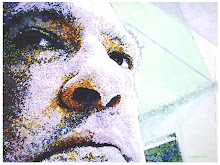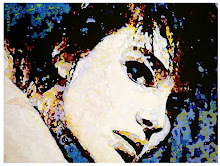Wednesday, January 30, 2013
History of the Preparation of Insulin - Homemade Insulin, Part 3….Did Eva Saxl mean Bergmann not Beckman ? Jensen's text
In the book, “Cheating Destiny: Living with Diabetes”, the author, James Hirsch recounts how Eva Saxl, an insulin diabetic and her husband, Viktor, managed to produce a homemade insulin using information from a medical text called “Beckman’s Internal Medicine”. They did this under duress in World War II in China during the Japanese occupation of Shanghai. Not only were they able to keep Eva alive with the homemade product but also another 200 diabetics in the Shanghai Ghetto where they lived.
Eva herself retold the story but with no mention of the Beckman’s medical text, shortly after the war, in the 50’s for Edward R. Murrow’s radio broadcast, “This I Believe.” - http://thisibelieve.org/essay/16957/ . Eva Saxl died in 2002 in Santiago, Chile.
There do not appear to be any records showing such a medical text “Beckman’s Internal Medicine” ever existed either in English or German (Innere Medizin). What does exist are medical textbooks published by Bergmann in Munich at the same time. Especially notable was the volume, “Insulin”, by Grevenstuk and Laquer, published by Bergmann in 1925. The book was written in German. Eva was an accomplished linguist, fluent in 5 languages. It was referenced by J.J.R. Macleod a professor of physiology in Toronto and one of the prominent researchers involved the development of Insulin, in his book “Carbohydrate Metabolism and Insulin”, published in 1926 by Longmans, Green, and Co. Ltd. of London.
Some of the difficulties and uncertainties encountered by the Saxls had to do with purification and potency of their homemade insulin.
Another early researcher of insulin, H. F. Jensen, authored a text entitled "Insulin" in 1938, published by The Commonwealth Fund, New York in which he described the early research and difficulties associated with the preparation of insulin. His work was referenced by numerous other investigators and authors.
What follows are excerpts from Jensen’s book for information purposes and is intended only to relate to the story of the historical development of Insulin.
Chapter 2. Preparation of Insulin
Page 27 Methods of Purification
"In the purification of insulin, the following methods are generally employed: a) isoelectric precipitation, b) precipitation as a salt, c) adsorption, and d) fractional precipitation with organic"
Page 28
"solvents. Somogyi, Doisy, and Shaffer (67) observed that most of the active principle can be precipitated from aqueous solutions by adjusting the hydrogen ion concentration of the solution to about pH 5. The precipitate contains the insulin in a very active form. Waldo (65, 66) independently made the same observation. This isoelectric method of purifying insulin is generally used: however, the potency cannot be increased beyond a certain stage even with repeated isoelectric precipitations.
Dudley (29) purified the crude insulin, prepared by Collip's method, by precipitating the active material from aqueous solutions with picric acid. The insoluble picrate was then converted into a soluble hydrochloride by means of an alcoholic solution of hydrochloric acid.
Boivin and his associates (17, 18) have apparently obtained very pure amorphous insulin preparations by a further purification of the picrate by isoelectric precipitation. Funk (34) employed flavianic acid as a precipitant and claimed to have isolated the hormone as a a flavianate. Dickens and his collaborators (21)have described a method for the purification of insulin consisting in the precipitation of the active material with a 2 per cent trichloracetic acid and the salting out of the insulin from the acid solution of the precipitate. This was followed by precipitation as an oxalate at pH 2.42 -3.7 by the addition of N/8 potassium oxalate to the solution of insulin hydrochloride. Purified insulin preparations were also obtained in the same way by various other workers (3, 17, 20, 55).
Moloney and Findlay (49, 50) purified insulin by making use of the fact that the hormone is adsorbed by benzoic acid and by charcoal. Dingemanse likewise found charcoal a good adsorbent (22, 23), whereas Sandberg and Brand used kaolin (60). Alumina evidently cannot be employed for this purpose (24).
Shonle (65) has described the method used for large-scale pro-"
Page 29
"duction of insulin at the Eli Lilly Research Laboratories. The fresh glands, finely ground, are extracted with alcohol containing one per cent sulfuric acid, and the alcoholic extract of the gland is concentrated in vacuo at 25 . After the fat has been removed, alcohol is added to the solution until the alcohol concentration reaches 80 per cent. The concentration of the alcohol in the filtrate from the inert protein material is then increased to 93 per cent; this causes the precipitation of insulin together with much inert protein material. The precipitate is further purified by isoelectric precipitations. In this way the insulin is secured for clinical use.
Scott and Parker (63) have outlined the procedure followed at the Connaught Laboratories for preparing a highly purified insulin preparation. Fresh ox pancreas is dropped into acid aqueous alcohol and allowed to stand overnight. After centrifugation, the extracts are made alkaline with ammonium hydroxide (pH 8), the filtrate is reacidified, and the alcohol is distilled off in vacuo. The concentrate should have a pH of about 2. The protein material in the filtrate from the lipoid material is separated by salting out with 25 per cent sodium chloride. The precipitate is then dissolved in water and the protein reprecipitated by the addition of sodium chloride to 15 per cent concentration. The insulin protein precipitate is dissolved in dilute hydrochloric acid. The solution is brought to pH 5 by the addition of 5 N sodium hydroxide and allowed to stand a 2 for one week. The precipitate which settles out is centrifuged off and dissolved in water containing sufficient sulfuric acid to bring the reaction to pH 2. Four volumes of absolut alcohol are added; after standing at room temperature for two days, the solution is filtered and absolut alcohol and ether are added to the alcoholic filtrate. The insulin protein is thus precipitated out and is further purified by isoelectric precipitation at pH 5. The isoelectric insulin precipi-"
Page 30
"tate is dissolved in dilute hydrochloric acid (pH 2.8) and sterilzed by means of a Seitz filter. It can then be used for therapeutic purposes.
The first steps of Gerlough and Bates' (35) method are similar to those of Best and Scott's procedure (cited above). For further purification, the crude defatted insulin preparation is dissolved at pH 2.5-2.8, and the insulin protein is salted out by 16 per cent sodium sulfate. The precipitate is taken up in 60 per cent alcohol and the insulin precipitated from the filtrate by the addition of alcohol to a concentration of 90-92 per cent. Three isoelectric precipitations at pH 5.0 are made to remove any inert, soluble protein. In this way, products assaying 21-24 units per milligram have been obtained. In another scheme of purification, these investigators apply their observation that the solubility of insulin in aqueous alcohol is affected by the presence of certain inorganic salts.
Abel and Geiling (1) purified commercial insulin (iletin) by repeated precipitation with N/6 pyridine solution from dilute acetic-acid solution. The dry precipitate thus obtained was next extracted with 90 per cent phenol, in which the hormone is soluble. The insulin was then precipitated from the phenol solution by the addition of either dry ether or absolute alcohol. In this way these investigators were able to raise the rabbit unitage considerably. It was such a preparation which Abel and his associates first employed in the crystallization of the hormone.
The data concerning the chemical and physical properties of insulin obtained by the study of these incompletely purified preparations are naturally inexact and therefore not reported here, but certain references are made to them in the chapter dealing with the physical and chemical properties of crystalline insulin. a description of the earlier chemical work may be found in various handbooks and reviews (25, 37, 43, 65, 72). Certainly,"
Page 31
"the early chemical work on these preparations already indicated the protein nature of the hormone ( 29, 66, 67 )."
Chapter 4 Standardization of Insulin
Page 78 (to be continued ......)
Links -
Wikipedia - Protein Precipitation
Isoelectric point precipitation
The isoelectric point (pI) is the pH of a solution at which the net primary charge of a protein becomes zero. At a solution pH that is above the pI the surface of the protein is predominantly negatively charged and therefore like-charged molecules will exhibit repulsive forces. Likewise, at a solution pH that is below the pI, the surface of the protein is predominantly positively charged and repulsion between proteins occurs. However, at the pI the negative and positive charges cancel, repulsive electrostatic forces are reduced and the attraction forces predominate. The attraction forces will cause aggregation and precipitation. The pI of most proteins is in the pH range of 4-6. Mineral acids, such as hydrochloric and sulfuric acid are used as precipitants. The greatest disadvantage to isoelectric point precipitation is the irreversible denaturation caused by the mineral acids. For this reason isoelectric point precipitation is most often used to precipitate contaminant proteins, rather than the target protein. The precipitation of casein during cheesemaking, or during production of sodium caseinate, is an isoelectric precipitation.
3D Model Babcock Style Manual Lab Centrifuge
Manual Hand Crank 4 Tube Lab Centrifuge
DIY Dremel Lab Centrifuge
Honeycomb Extractor Centrifuge
Subscribe to:
Post Comments (Atom)









No comments:
Post a Comment